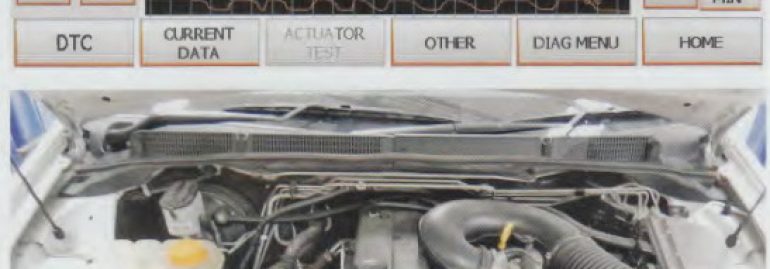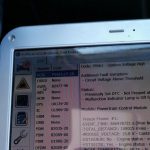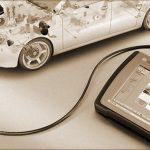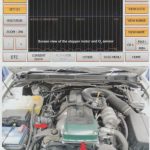Before you can determine why your check engine light is illuminated, you need to extract the diagnostic trouble codes (DTC) generated by the onboard computer system. This can be done using an OBD2 scanner or code reader.
These scanners or readers plug into your vehicle’s 16-pin OBD-II diagnostic connector located beneath the steering column. Follow the manufacturer’s operating instructions to access and read codes from these tools.
Fuel Pump
The fuel pump is one of the most essential elements in any automobile’s fuel system, ensuring that the correct amount of gas gets to your engine. If it malfunctions or leaks, serious problems can ensue.
Signs that your fuel pump may be malfunctioning include difficulty starting the vehicle, engine sputtering and noise coming from the fuel tank area. If these symptoms appear, it’s best to visit a mechanic right away.
Stalling and rising temperatures are common indications of a malfunctioning fuel pump. Although stalling can be caused by many issues within your car, when the engine stalls with increasing temperatures displayed on its temperature gauge, this typically indicates an issue with its motor.
A malfunctioning fuel pump can lead to a variety of other issues, such as an illuminated check engine light or no-start condition. The fastest way to determine if your pump is defective is to attach a $20 fuel pressure gauge and start the car.
When your fuel gauge reads zero, it could indicate low fuel pressure due to a malfunctioning fuel pump relay or other issues in the electrical system.
Code P0230 is set off when the PCM (engine control module) detects low voltage on the main power circuit of the fuel pump relay. This voltage is monitored by the fuel pump, which sends a signal when it drops below an established threshold.
If your vehicle is having difficulty starting, first check the fuel pump relay and fuse. If they are working properly, proceed to the next step.
Ignition System
The ignition system is an integral element of any car. It creates a spark that ignites fuel and air mixture inside your engine to produce combustion.
Different ignition systems are available for your vehicle, each offering its own advantages and drawbacks. These may include:
Magneto – This ignition system uses breaker points and a condenser to trigger the spark plug wires. It’s an ancient type, with many moving parts that must be maintained regularly, plus it produces lower quality sparks than electronic systems do.
Electronic Ignition System – More advanced than magneto ignition, this type of ignition system creates high voltage to regulate ignition timing and eliminates the need for a distributor and breaker points. It works by creating high voltage at specific points on the coil, eliminating any need for external power sources.
These systems are more energy-efficient and reduce emissions, but they require more space to run and can be expensive to maintain.
Modern engines often employ a direct-fired ignition system, which places an ignition coil directly over top of the spark plugs. This enables the engine control module to precisely regulate ignition timing based on input from various sensors.
A malfunctioning ignition coil can cause your car to misfire, which is highly hazardous and could lead to internal damage if left untreated. A reliable diagnostic tool will read any misfire codes and give you a good indication of which cylinder is causing the issue.
Some scan tools will even display the misfiring cylinders in real-time, which is useful when diagnosing a failed ignition coil as it helps narrow down which part is responsible. Some even feature misfire counters which indicate how often your car misfires so you can quickly identify which cylinder is at fault.
Oxygen Sensor
The oxygen sensor is an integral component of your car’s emissions system and sends data to the engine computer. A malfunctioning oxygen sensor can result in poor fuel economy and a musty odor from exhaust.
The sensor measures the oxygen content in exhaust and relays this data to your car’s computer, which then adjusts fuel-to-air ratio in real time. This ensures your car passes emissions tests while keeping emissions as low as possible.
Modern cars utilize two sets of oxygen sensors: one installed before and one after the catalytic converter in your vehicle’s exhaust pipe, commonly referred to as Sensor 1 and Sensor 2.
If the sensor malfunctions, your car’s engine management computer will be unable to accurately determine the air-to-fuel ratio and will attempt to guesstimate how much gasoline should be injected into its engine. This can lead to poor gas mileage as well as a rotten egg smell due to burning sulfur.
A malfunctioning oxygen sensor can cause the engine to misfire and stall, which is a serious issue that should be investigated by an experienced mechanic.
Furthermore, your mechanic can assist in deciphering why your check engine light is illuminated. It’s common for these lights to be caused by a variety of issues; however, pinpointing exactly why can be challenging.
Your mechanic can then use a high-impedance digital voltmeter to check the voltage on each oxygen sensor in your car’s catalytic converter. After testing them, they’ll be able to pinpoint precisely what’s wrong and provide advice on how to resolve it.
Mass Airflow Sensor
The mass air flow sensor, or MAF sensor, is an integral component of your vehicle’s engine. It sends data to the computer so that your car runs at the correct air-to-fuel ratio. This measurement is essential for optimal performance as it allows the ECM to inject just enough fuel at precisely the right time.
This sensor works by using a heated wire to measure how much air is flowing through your vehicle’s intake system. It then sends this data to the engine control module (ECM), so it can adjust fuel injection accordingly for proper air-fuel ratio maintenance.
If your car’s fuel-to-air ratio is too rich, it could cause issues like stalling and poor acceleration. This is usually caused by dirt buildup on the wires of your MAF sensor; mechanics can clean these wires to restore your vehicle to proper working order.
It’s also possible that the MAF sensor isn’t sending accurate data. This can occur if your car runs too lean or if its air filter becomes clogged with dirt, debris, or dust particles.
Another possible issue could be that your MAF is damaged or missing parts. Fortunately, this repair job should only take a few minutes to complete and won’t put off your busy schedule.
If you need a replacement MAF sensor, Delphi Technologies offers one. These sensors come in clamshell packaging to protect them during transit and come with driver bits for effortless installation – and can be purchased online or at stores like NAPA Auto Parts.
Fuel Pressure Sensor
The fuel pressure sensor is an integral component of your vehicle’s system that transmits data to your engine control unit (ECU). This information allows the ECU to calculate how much fuel is necessary for starting up, running efficiently, and reducing evaporative emissions.
If your fuel pressure sensor is damaged, you may experience several symptoms. These include the check engine light, stalling engine and higher than usual fuel consumption rate.
Test the fuel pressure sensor in your BMW by plugging a multimeter into its negative terminal. Refer to your owner’s manual for instructions on what values to measure.
With a multimeter, measure the voltage at the sensor coupler and compare it with what your owner’s manual specifies. If it falls outside this range, you will need to replace the fuel pressure sensor.
As previously discussed, the fuel pressure sensor plays an integral role in your vehicle’s fuel injection system. This three-wire sensor attaches to fuel rails and sends data to your engine’s control system.
The fuel pressure sensor is a common part in diesel engines and some petrol models. Replacing one typically costs $50-$150 depending on your car’s brand and model.
The first sign to watch for is the check engine light on your dashboard. This light illuminates when the engine control unit detects an issue with signal from fuel rail pressure sensor and should serve as a prompt for visiting a mechanic.






